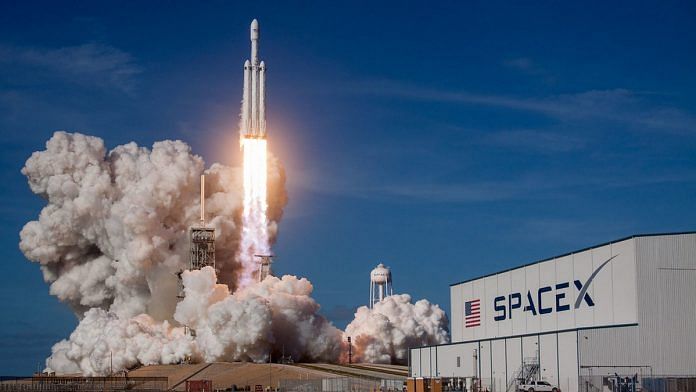Bengaluru: SpaceX sent its latest Dragon cargo capsule to the International Space Station this week, successfully launching on the company’s two-stage Falcon9 rocket at 10:59 am (0529 Hrs GMT) Friday. The mission, called CRS-22, is currently in orbit and incudes 3,311 kg of research material and supplies to the ISS.
The mission is transporting living specimens for biological experiments, new high-tech solar panels to install outside the station, and regular supplies including food.
The Dragon is expected to autonomously dock to the space station’s Harmony module on 5 June at 2:30 pm (0900 Hrs GMT). It is the fifth Dragon capsule to fly to the station in the past 12 months. Another Dragon, which launched the Endeavour crew in April, is still parked at the station.
Nine minutes after the launch, SpaceX also successfully steered the booster stage of its rocket, called B1067, to land on the sea barge named ‘Of Course I Still Love You’ in the Atlantic Ocean. This is the 86th recovery of a Falcon first stage in the past six years.
The solar panels to be delivered in this mission are the first of three sets of high-powered, state-of-the-art panels that will augment the station’s power needs. More power will also be needed to accommodate the growing number of ticket-buying early space tourists, NASA’s space station programme manager, Joel Montalbano, said Wednesday.
Astronauts onboard the ISS will conduct two extra-vehicular activities in the form of spacewalks to install the two roll-out panels. The existing, rotating panels on either side of the ISS have been in continuous operation for over 20 years and can be seen from earth with the naked eye as they reflect sunlight when the ISS passes within line of sight.
Also read: NASA announces two new missions to Venus as it seeks to ‘rediscover the planet’
Oral bacteria, tardigrades, squid on board
The cargo contains samples of oral bacteria and saliva, along with toothpaste and mouthwash, which will make up a biological experiment to determine the oral health of astronauts. There is also a capsule containing over 20,000 microscopic tardigrades or water bears, which are extremophile organisms capable of surviving extremely harsh conditions. This experiment will aim to understand how these creatures survive in space and microgravity, and how they could reproduce in these environments.
Newly hatched, bioluminescent bobtail squid have also been sent, which will make up an experiment that aims to study symbiotic or mutually beneficial relationships between animal hosts and microbes in space. Bobtail squid have bioluminescent bacteria living in their bodies that emit light, with whom the animals have a natural symbiotic relationship — the squid provides the bacteria sugar and amino acids, while the bacteria provide protection to the squid by lighting up so that predators below cannot spot it when looking up. Camouflaging tactics using light is called counter-illumination.
The animals will also be monitored for kidney stones, and any issues relating to the digestive and immune system.
Results from animal and microbe experiments are expected to yield insights into keeping astronauts healthy and safe in space.
Also in the capsule are perishable supplies in the form of fruits and vegetables including lemons, onions, avocados, apples, and cherry tomatoes for the seven astronauts.
The new design of the Dragon module can hold 20 per cent more cargo than the earlier version that was retired in 2020. It can stay on the ISS for twice as long, and can also splash down into the Atlantic Ocean instead of just the Pacific. Each spacecraft is also certified to fly five times instead of its predecessor’s limit of three.
Also read: Are UFOs for real? Why everyone is talking about them much more seriously now



